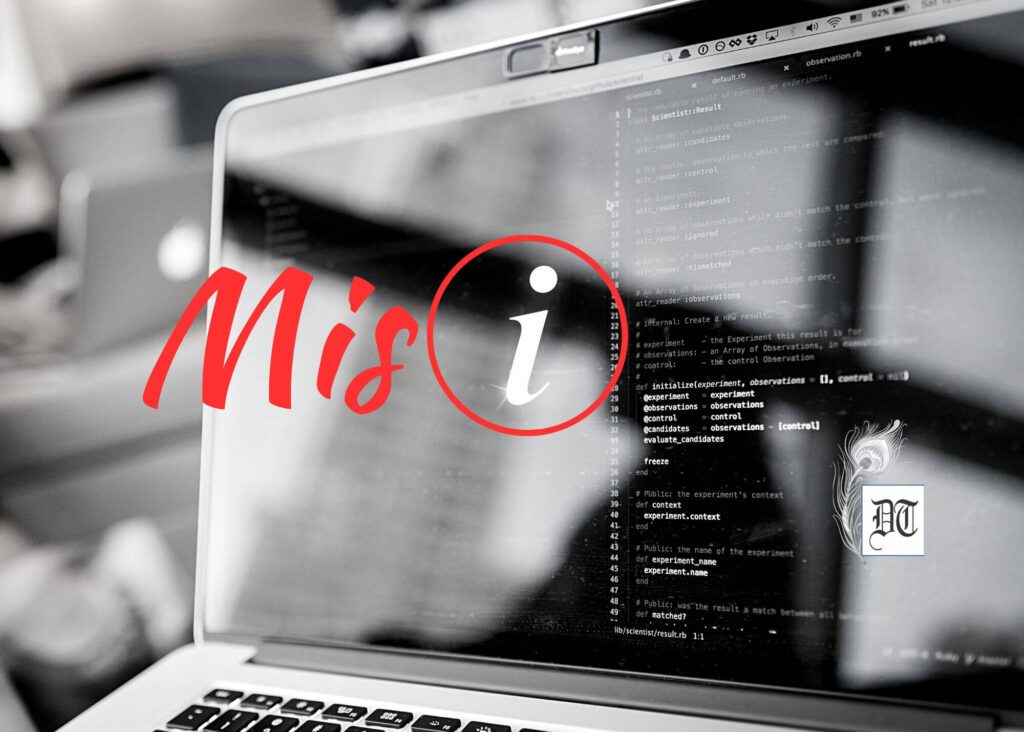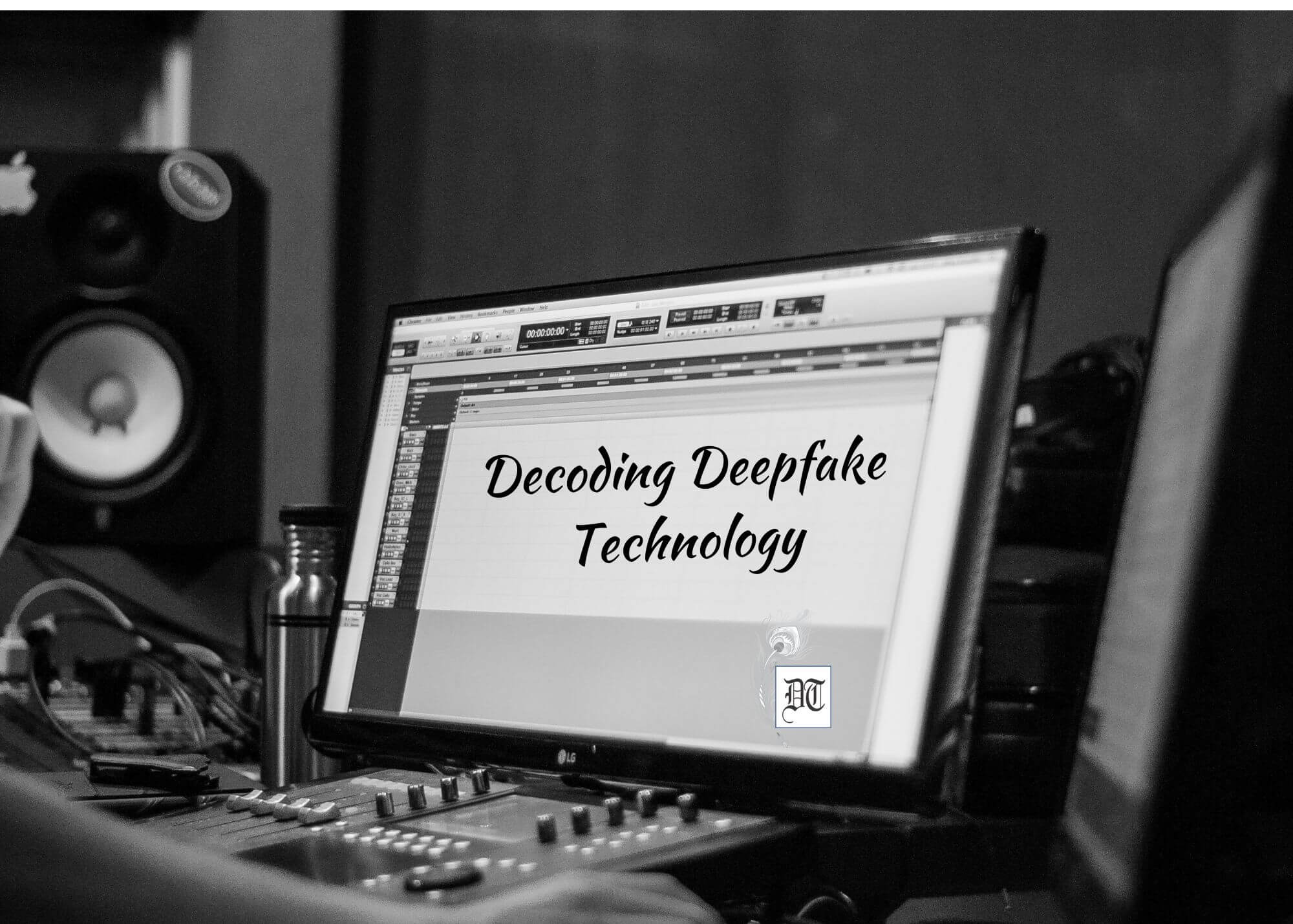Reading Time: 6 minutes
Arindam elucidates that deepfake technology, a blend of deep learning and fake is a powerful tool but raises concerns about its potential for misinformation and manipulation of digital content, necessitating a multifaceted approach, exclusively for Different Truths.

The merger of ‘deep learning’ with ‘fake’ has given rise to deepfake technology, which has emerged as a powerful tool for manipulating digital information. This technology is largely powered by advanced artificial intelligence (AI) algorithms. While deepfakes present enticing opportunities for the entertainment and creative sectors, their negative aspects give rise to significant apprehensions over their capacity to propagate false and misleading information. This article explores the origins, uses, and consequences of deepfake technology, providing insight into the complex realm of AI-generated material.
Understanding Deepfake Technology
The core of deepfake technology is the complex functioning of deep learning algorithms, with generative adversarial networks (GANs) being the focus. GANs function by employing a dynamic interaction between two neural networks – the generator and the discriminator – involved in an ongoing feedback loop. The generator is tasked with producing artificial content, such as photos or films, while the discriminator evaluates the genuineness of the created material. This repetitive procedure enhances the result until it reaches a point where it is almost impossible to differentiate it from authentic media.
Origins and Evolution of Deepfake Technology
The origins of deepfake technology may be attributed to the convergence of scholarly investigations in neural networks and image synthesis. Nevertheless, the phrase achieved extensive acknowledgement in 2017 when a Reddit user by the moniker of “deepfakes” started disseminating AI-generated pornographic movies that showcased the visages of celebrities overlaid onto explicit material. This signalled the commencement of an epoch in which the utilisation of AI to manipulate audio and visual information emerged as a noteworthy social apprehension.
Applications of Deepfake Technology
Entertainment and Film Industry: The entertainment and film sector has extensively utilised deepfake technology. Deepfakes can be employed by filmmakers to resurrect departed actors or produce lifelike situations that were previously considered impractical.
Face-swapping in Videos:Video-based face-swapping is a prevalent phenomenon on social media platforms, where many amusing films can be found. Users utilise deepfake technology to overlay their facial features into renowned movie sequences, music videos, or other popular content.
Voice Synthesis: Deepfake technology can go beyond only manipulating visual images and can synthesise voices. The use of artificial voices that imitate actual humans has significant ramifications for voiceover work and voice-based verification systems.
The Dark Side of Deepfake Technology
While the applications of deepfake technology in entertainment are intriguing, they come with significant risks:
Political Manipulation: Deepfakes pose a serious threat to political landscapes, as they can be used to create fabricated videos of public figures, potentially influencing elections or triggering geopolitical tensions.
Fake News and Misinformation: The ease of creating convincing deepfake videos has heightened concerns about their role in spreading fake news. Manipulated content can be used to construct false narratives, leading to widespread public confusion.
Identity Theft and Fraud: Deepfake technology opens the door to identity theft by creating realistic videos or audio recordings of individuals. This can lead to fraudulent activities such as impersonation and financial scams.
Deepfakes: A Double-Edged Sword
Deepfake technology presents a unique challenge: it offers incredible potential for creative expression and innovation, but also poses serious threats to information integrity and security. Navigating this complex landscape requires a multifaceted approach, combining technological advancements, regulatory measures, and increased public awareness.
The Dark Side of Deepfakes
Deepfakes can be used to spread misinformation, manipulate public opinion, and even commit fraud. Malicious actors can create fake videos or images that appear to depict real events or people, making it difficult for the public to discern truth from fiction. This can have a devastating impact on individuals, organisations, and even entire democracies.
Misinformation: Deepfakes can be used to spread false narratives and propaganda, potentially influencing elections, inciting violence, and eroding trust in institutions.
Impersonation: Deepfakes can be used to impersonate individuals, leading to identity theft, financial fraud, and reputational damage.
Manipulation: Deepfakes can be used to manipulate people’s emotions and behaviours, potentially leading to harmful consequences such as cyberbullying or extortion.
A Multifaceted Approach to Mitigating the Risks
Addressing the challenges posed by deepfakes requires a holistic approach that encompasses various aspects:
Technological Progress: Creating instruments to identify and authenticate deepfakes. Applying watermarking techniques to detect altered material. Allocating resources towards the implementation of artificial intelligence (AI) based technologies that can identify and counteract the use of deepfake content.
Regulatory Measures: Implementing unambiguous legislative frameworks to govern the production and dissemination of deepfakes. Ensuring individuals are held responsible for the malevolent exploitation of deepfake technology. Engaging in international collaboration to establish uniform regulations and systems for enforcement.
Enhanced Public Awareness: Disseminating knowledge to the general population on the perils and hazards associated with deepfakes. Advocating for the development of analytical reasoning abilities and the ability to evaluate and interpret media content. Promoting the proper utilisation of deepfake technology and cultivating ethical deliberations.
By amalgamating these endeavours, we may use the advantageous capabilities of deepfake technology while alleviating the accompanying hazards. This will empower us to forge a future in which deepfakes are used for benevolent purposes rather than malicious intent.
Exercising discernment while encountering internet material is of utmost importance since it is imperative to authenticate its validity before disseminating it to others. Through acquiring knowledge and maintaining a state of alertness, each individual may actively contribute to preserving the accuracy of information and shielding themselves from the possible detrimental consequences of deepfakes.
Fake News and Misinformation:

The swift advancement of deepfake technology has sparked legitimate worries over the spread of disinformation. Deepfakes possess the capacity to effortlessly control the words and behaviours of humans, therefore fabricating deceptive storylines that result in extensive public bewilderment. The ramifications of this extend beyond innocuous pranks, as deepfakes may be utilised as weapons to manipulate public sentiment, especially within the realm of political environments.
The difficulty is in discerning between genuine and altered information, as deepfake films get ever more advanced. Scientists are now involved in the development of sophisticated detection algorithms that utilise artificial intelligence (AI) and machine learning to assess minor discrepancies in facial expressions, lighting, and audio. These algorithms have the objective of developing a dependable method for distinguishing between authentic and altered media, providing a technical defence against the dissemination of false information.
Identity Theft and Fraud:
The utilisation of deepfake technology presents a substantial peril in the domain of identity theft and fraudulent activities. Through the production of authentic movies or audio recordings featuring persons, malicious individuals might enable a range of deceitful acts, such as impersonation and financial fraud. False information disseminated through modified material can cause persons to experience reputational damage, in addition to significant financial losses.
To address these dangers effectively, a comprehensive strategy is necessary, which includes both technological remedies and legislative interventions. Technological developments in deepfake detection algorithms have a dual impact: they help reduce the spread of disinformation and play a vital role in avoiding identity theft and fraud. Through the process of recognising and marking modified material, these algorithms serve as an initial barrier against nefarious intentions.
Combating Deepfake Threats:
To effectively tackle the complex issues presented by deepfake technology, different parties must collaborate. Authorities and technology corporations are investigating regulatory structures to enforce sanctions for the production and distribution of harmful deepfake material. The goal of these precautions is to discourage malevolent individuals from utilising deepfake technology for bad intentions.
Furthermore, media literacy and education are essential in equipping individuals to safely navigate the digital realm. Raising public consciousness of the presence and potential consequences of deepfakes empowers individuals to cultivate their analytical abilities, distinguishing between genuine and altered content. Media literacy initiatives, whether conducted through digital platforms or in person, play a crucial role in fostering a well-informed and alert society, hence mitigating the vulnerability to the risks associated with deepfake technology.
To summarise, the ongoing progress of deepfake technology necessitates addressing the many issues it presents, including disinformation, identity theft, and fraud. It is crucial to adopt a holistic approach that includes technical innovation, legislative measures, and mass education to appropriately address these difficulties. Through maintaining a state of constant alertness and taking pre-emptive measures, society may effectively utilise the advantageous elements of deepfake technology while simultaneously protecting against its potential for abuse.
References:
Goodfellow, I., et al. (2014). “Generative Adversarial Nets.” arXiv preprint arXiv:1406.2661.
Li, Y., et al. (2020). “Deep Learning in Video Manipulation: A Comprehensive Survey.” IEEE Transactions on Neural Networks and Learning Systems, 31(10), 3774-3802.
Zhou, P., et al. (2019). “Deep Voice Cloning and Emotional Voice Conversion via Attention-Enabled Sequence-to-Sequence Model.” IEEE Transactions on Multimedia, 21(11), 2973-2984.
Farid, H. (2019). “Deepfake Detection Challenge Results.” IEEE Signal Processing Magazine, 36(5), 16-21.
Li, Y., Chang, M. C., Friedland, G., & Lyu, S. (2018). “In ictu oculi: Exposing AI-generated fake face videos by detecting eye blinking.” arXiv preprint arXiv:1806.02877.
Marra, F., Amato, G., Falchi, F., & Gennaro, C. (2020). “Deepfake detection through fine-tuning of convolutional neural networks.” Future Generation Computer Systems, 114, 727-738.
Brubaker, J. R., & Sangalang, A. (2019). “Media literacy interventions: A meta-analytic review.” Journal of Communication, 69(4), 458-473.
Specific References:
The origin of deepfakes is explored in https://www.nytimes.com/2023/02/07/technology/artificial-intelligence-training-deepfake.html.
The use of GANs in deepfakes is detailed in https://arxiv.org/pdf/1406.2661.
The impact of deepfakes on political manipulation is discussed in https://www.brookings.edu/articles/deepfakes-and-international-conflict/.
The challenges and opportunities of deepfake technology are analysed in https://aiforum.org.nz/wp-content/uploads/2018/07/AI-Report-2018_web-version.pdf.
Picture design by Anumita Roy















